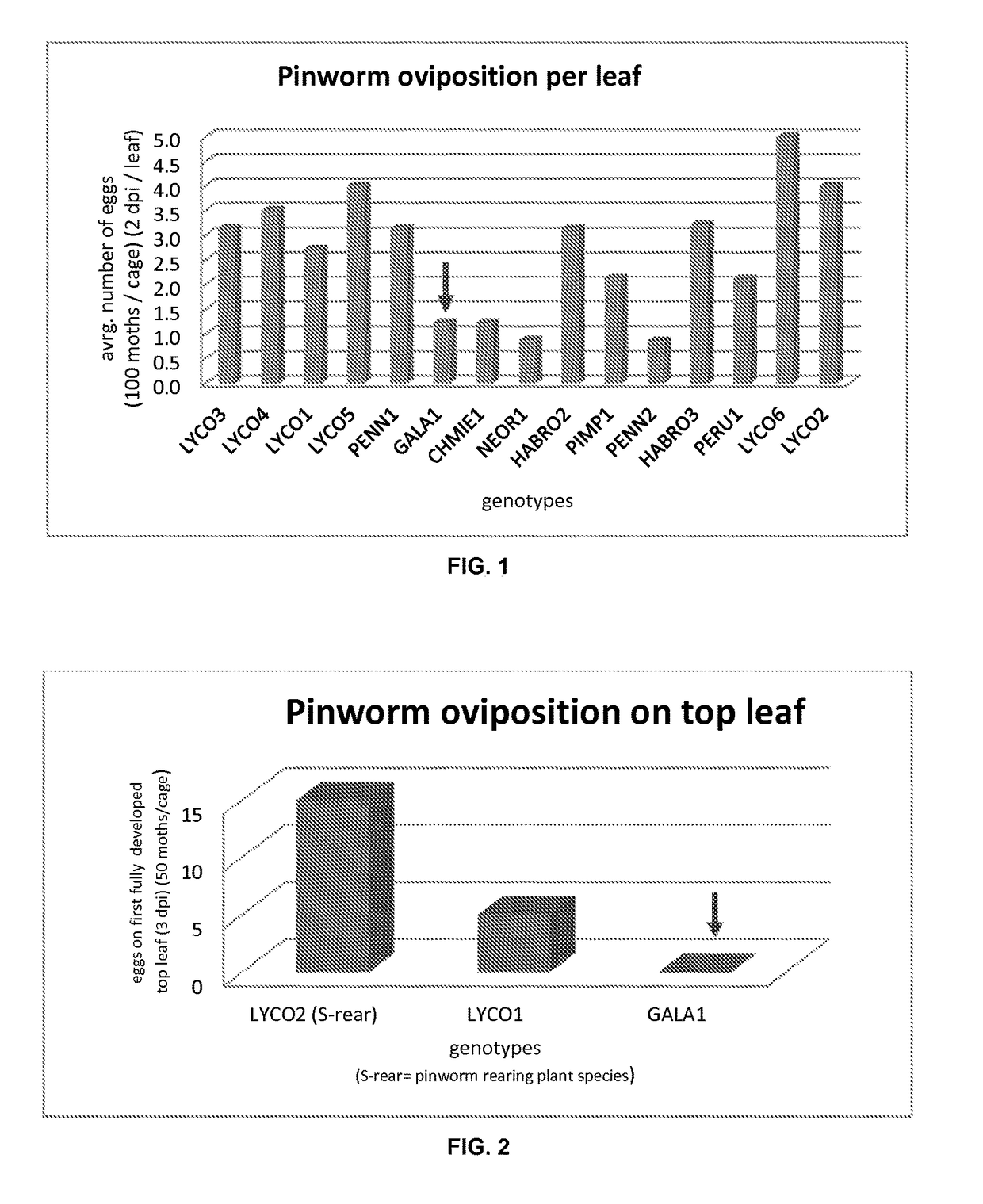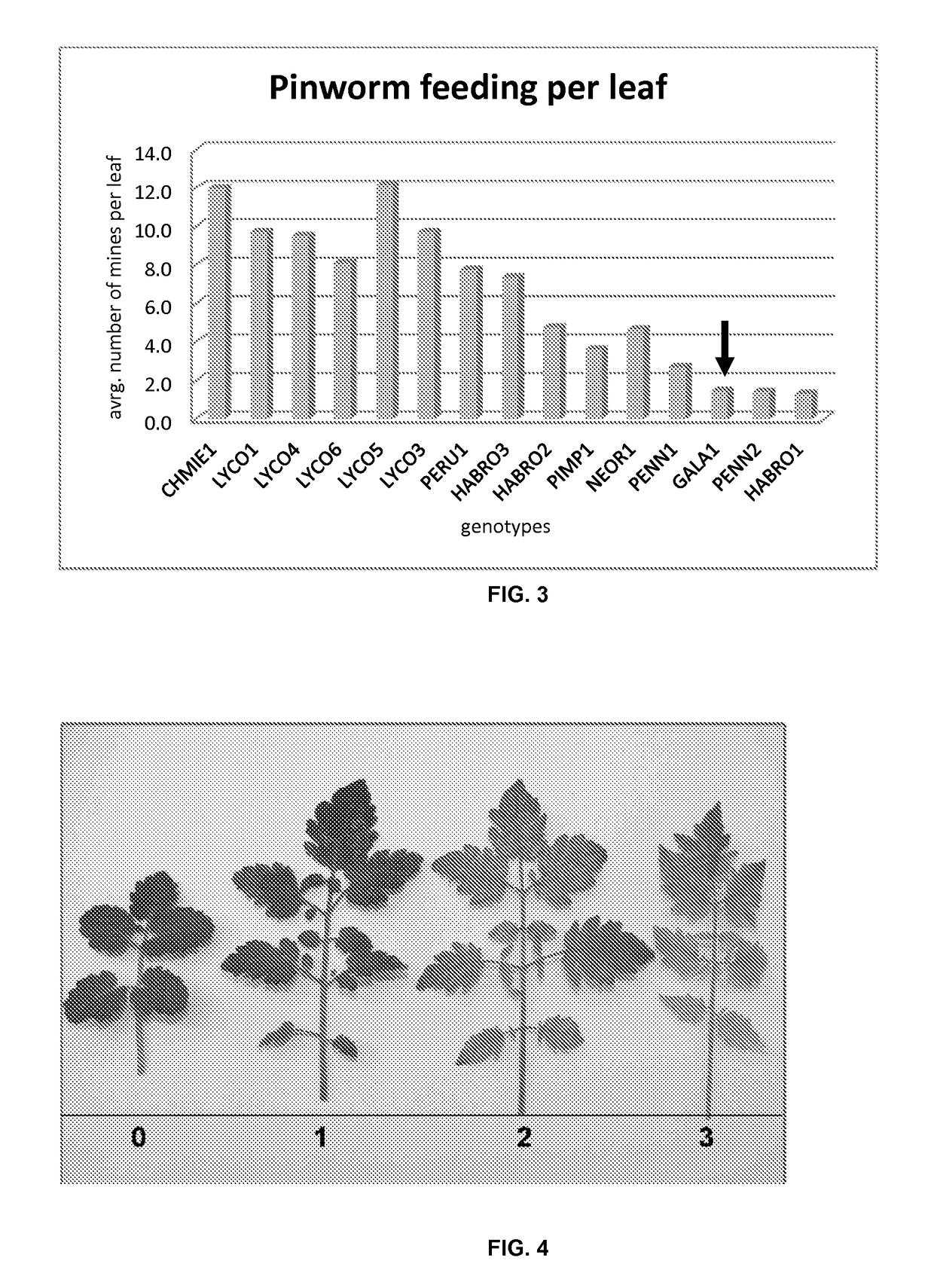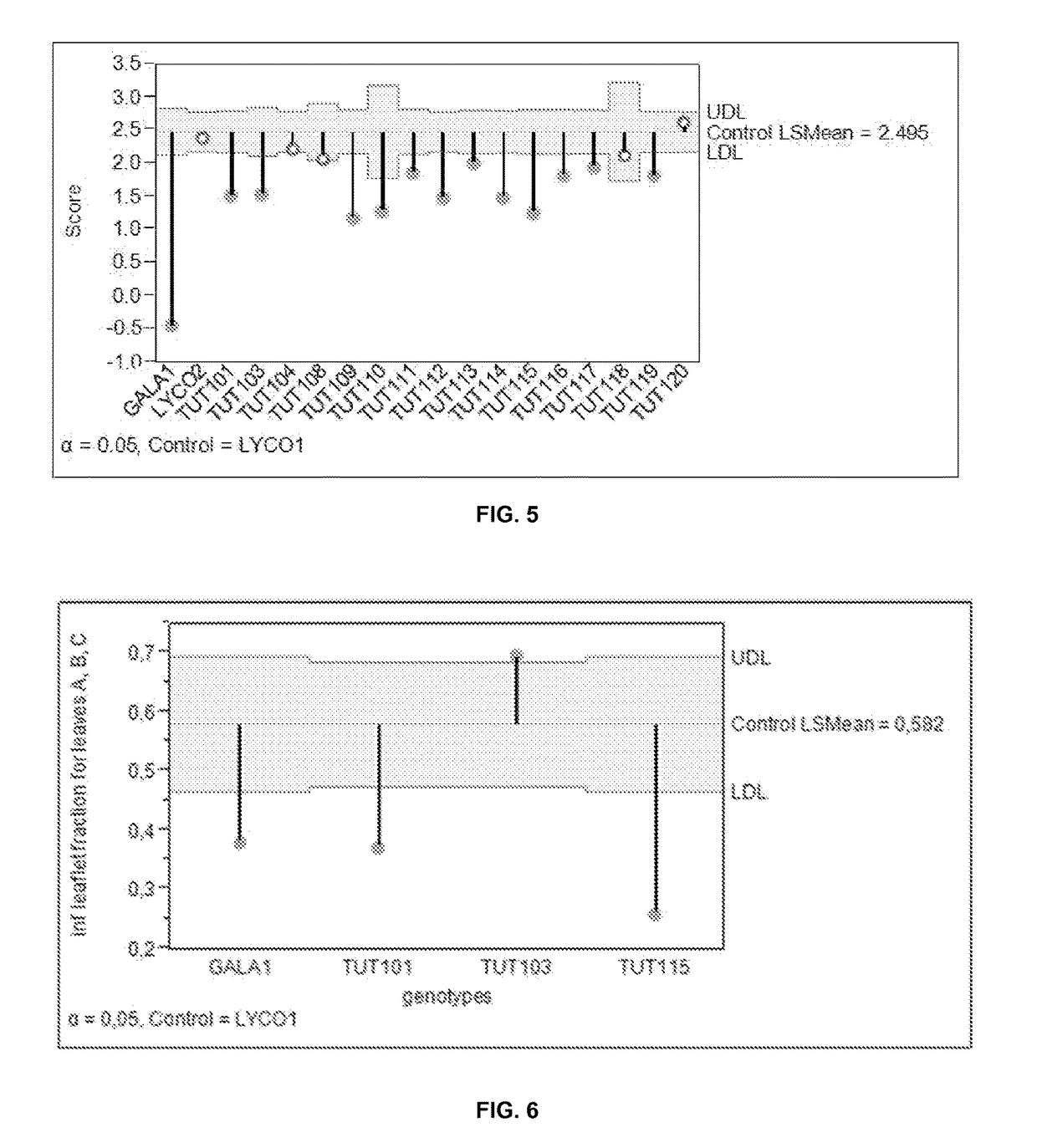Resistance to arthropod pest in tomatoes
a technology for tomatoes, applied in the field of resistance to arthropod pests in tomatoes, can solve the problems of affecting the growth of angiosperms/flowering plants, and affecting the growth of angiosperms/flowering plants, and achieving the effect of pests, and reducing the number of arthropods
- Summary
- Abstract
- Description
- Claims
- Application Information
AI Technical Summary
Benefits of technology
Problems solved by technology
Method used
Image
Examples
example 1
Test of a Possible Source of Resistance to T. absoluta
[0211]As a starting point of the realization of the invention, the present inventors have conducted several experiments to screen for tomato pinworm resistance amongst several tomato species. As of today, S. galapagense has not been identified as a possible source of resistance to T. absoluta.
Materials and Methods:
Tomato Germplasm Rearing
[0212]Tomato germplasm was sown and reared in nursery trays (187 holes of 1.5″ / tray). Seedlings having 3-4 true leaves were transplanted into 1 L pots containing soil mixture of peat and volcano soil (2:1). Plants were transferred to an insect free greenhouse for further development. Plants were regularly watered and fertilizer was added (6:6:6 NPK+micro elements). Temperatures varied between day and night and over seasons: namely 26° C. at day and 17° C. at night in winter, and 27° C. at day and 23° C. at night in summer. No insecticides were applied, and after three weeks plants were treated ...
example 2
Development of Molecular Markers and Identification of the Underlying Genetic
Materials and Methods
Plant Materials and DNA Extraction:
[0256]The discovery population for the experiment was an interspecific population derived from a cross between S. lycopersicum (inbred cultivar LYCO1) and S. galapagense GALA1. LYCO1 was verified as susceptible to South American Pinworm, and GALA1 was identified as resistant to South American Pinworm (example 1) This population consisted of F8 Recombinant Inbred Lines (RILs) developed by Single Seed Descent.
[0257]Genomic DNA from tomato leaves was extracted using Qiagen DNeasy plant DNA extraction kit.
[0258]A set of 737-SNPs combination was selected based on their allelic variation and evenly spaced along the genome. High-throughput SNP genotyping was carried out with the GoldenGate assays and the BeadXpress reader from Illumina. The genotypes (of the RILs and of the two parental lines) were screened with 384 markers in a single plate. SN...
example 3
Determine Resistance of Identified RIL's of GALA1 Against Additional Organisms
Spider Mites (Tetranychus urticae)
Materials and Methods
Experimental Design
[0283]In an experimental choice setting, 19 genotypes were tested for their suitability to rear spider mites on. Test plants were grown, as described in section Tomato germplasm rearing (Example 1), until plants reached the stage of having 4 true leaves. A genotype's suitability for spider mite rearing was measured by scoring feeding symptoms in combination with observed mites and webbings constructed by the mite species under testing. The experiment contained two experimental repetitions over time, per experimental repetition there were 3 repeats with each 11 seedlings per genotype (26° C.; 16 hr light:8 hr dark).
Infestation Method:
[0284]Test plants were infested three weeks after sowing by placing heavily infested leaves from the spidermite rearing face down on the test plants. The leaves used for infestation were placed close to e...
PUM
| Property | Measurement | Unit |
|---|---|---|
| time | aaaaa | aaaaa |
| height | aaaaa | aaaaa |
| RH | aaaaa | aaaaa |
Abstract
Description
Claims
Application Information
 Login to View More
Login to View More - R&D
- Intellectual Property
- Life Sciences
- Materials
- Tech Scout
- Unparalleled Data Quality
- Higher Quality Content
- 60% Fewer Hallucinations
Browse by: Latest US Patents, China's latest patents, Technical Efficacy Thesaurus, Application Domain, Technology Topic, Popular Technical Reports.
© 2025 PatSnap. All rights reserved.Legal|Privacy policy|Modern Slavery Act Transparency Statement|Sitemap|About US| Contact US: help@patsnap.com



